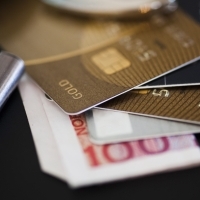Apple Pay Gets off to a Rough Start

We’re quickly approaching a time when your smartphone can do it all. It’s already a phone, internet browser, gaming device, movie streamer, and social media hotspot, but Apple’s Near Field Communication-powered payment platform, Apple Pay, has now made a swipe of your phone the easiest way to quickly handle transactions.
Well, it’s not quite the easiest way yet. Apple Pay made its debut October 20, and while plenty of iPhone users are having success paying for certain items with little effort and greater security, early glitches and issues have made this service difficult to recommend.
Bank of America customers were occasionally getting charged twice for a single purchase in the early stages of Apple Pay. The glitch is said to have been fixed with all duplicates being refunded, but people remain nervous after seeing frustrating issues like this out of the gate.
Adding to the frustration, integration within applications is still sparse. Developers have been slow to make use of the new feature, with fewer than twenty apps supporting it at launch. Popular apps like Groupon and Uber quickly adopted Apple Pay, but without strong support from other major developers, the service won’t be nearly as appealing.
Additional issues also exist. Some compatible apps don’t let you check out without being signed in. Then there is the mind-blowing issue of other apps only letting users pay for a single item at a time. A Forbes editor tested Apple Pay at a multitude of stores in order to get a feel for its functionality, and issues like Verifone payment terminals sitting behind counters made it difficult to use the TouchID requirement.
That’s not to say it’s a failure. Business Insider found that Apple Pay was simple to set up, shopping was often easier due to fewer steps during the purchasing process, and there was a greater sense of security. These are the fundamentals that Apple needed to nail and they seem to be in place. Limited in-app purchases, difficulties when trying to get a refund on a product, and uninformed employees at certain stores are all problems that can be resolved over time.
It might be a bit undercooked, but Apple Pay seems like a step in the right direction. People want and expect their devices to do bigger and better things, and Apple’s foray into payment processes will likely force smaller payment companies like Clilnkle and Softcard to adapt to this new climate. It might not be a revolution yet, but don’t be shocked when you see customer after customer in stores carrying phones in place of credit cards.

